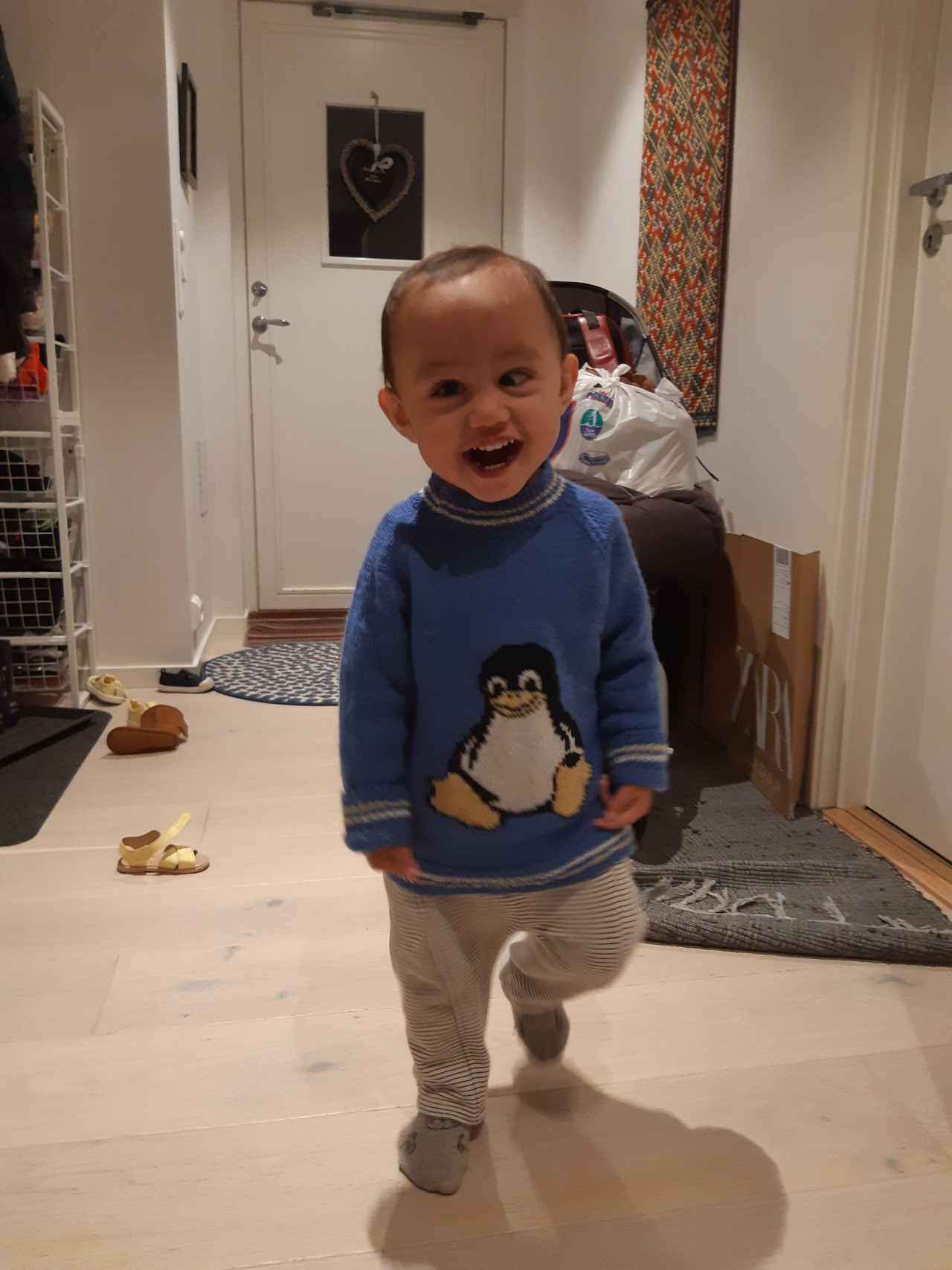Knitted Tux
My mother asked me what kind of sweater I would like her to knit for my son. After some thinking I decided I wanted him to have Tux on his sweater. I found a picture of tux, reduced the resolution to how many masks would fit on the sweater and did some manual correction of pixel colours. I also wanted the picture to have a grid and numbered ticks. This is not something the normal print dialog offers to do for you, but it can easily be done in Python using Matplotlib.

This is how I added the grid and numbered ticks in Python.
import matplotlib.pyplot as plt
import numpy as np
tux = plt.imread('Tux-lowres.png')
plt.figure()
im = plt.imshow(tux, interpolation='none', aspect='equal')
ax = plt.gca();
# Major Ticks
ax.set_xticks(np.arange(0, tux.shape[1], 1))
ax.set_yticks(np.arange(0, tux.shape[0], 1))
# Labels for major ticks
ax.set_xticklabels(np.arange(0, tux.shape[1], 1), rotation = 90)
ax.set_yticklabels(np.arange(0, tux.shape[0], 1))
# Minor ticks
ax.set_xticks(np.arange(-0.5, tux.shape[1], 1), minor=True)
ax.set_yticks(np.arange(-0.5, tux.shape[0], 1), minor=True)
# Gridlines based on minor ticks
ax.grid(which='minor', linestyle='-', linewidth=2)
plt.show()
Unfortunately this is not knittable, since it only a picture on the front and most of the colors are not used as a pattern around the whole sweater, my mother informed me. Which make sense when I think about it. But she could knit a sweater and make the picture using embroidery stitches that looks like knit masks. This is the result.

I also have to teach him about all the other helpful and friendly animals and, when he gets older, the dangers of poisonous fruits and broken windows.
